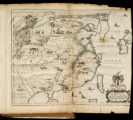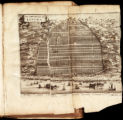| Title |
Embassy from the East-India company of the United Provinces, to the Grand Tartar Cham : Emperour of China |
| Call Number |
DS708 .N7 1669; Record ID 99190580102001 |
| Date |
1669 |
| Creator |
Nieuhof, Johannes, 1618-1672 |
| Publisher |
London : Printed by J. Macock for the author, 1669 |
| Contributors |
Goyer, Pieter de, fl. 1655; Keizer, Jacob de, fl. 1655; Ogilby, John, 1600-1676; Schall von Bell, Johann Adam, 1592?-1666; Nederlandsche Oost-Indische Compagnie. |
| Type |
Text |
| Format |
image/jpeg |
| Identifier |
index.cpd |
| Source |
DS708 .N7 1669 |
| Language |
eng |
| Collection Name |
Rare Books Collection |
| Holding Institution |
Rare Books Division, Special Collections, J. Willard Marriott Library, University of Utah |
| Rights |
 |
| Scanning Technician |
Kelly Taylor |
| Digitization Specifications |
Original scanned with Hasselblad H2D 39 megapixel digital camera and saved as 400 ppi uncompressed TIFF. JP2000 display images generated in CONTENTdm at 20:1 compression ratio. |
| ARK |
ark:/87278/s63v2rwk |
| Setname |
uum_rbc |
| ID |
236035 |
| Reference URL |
https://collections.lib.utah.edu/ark:/87278/s63v2rwk |




































































































































































































































































































































































































































































































